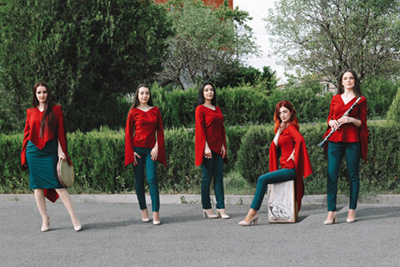WATERTOWN —The Armenian Museum of America recently announced a series of programs planned for April, with several focused on Genocide Education since the world recognizes April 24 as the date when the extermination of the Armenian people began in 1915. The Armenian Genocide resulted in the deaths of more than 1.5 million people and the displacement of many more from their homeland at the hands of the Ottoman Empire.
One of the major offerings from the museum will be a virtual exhibition titled “Campaign for Compassion: Lady Anne, General Azgapetian, and Near East Relief.”
Many around the world remained silent during the Genocide, however there were some who worked feverishly to aid survivors and to raise awareness about the crimes occurring in the region. This exhibition focuses on a husband and wife who led such a campaign for Near East Relief.
The exhibition was sponsored by a grant from the Cummings Foundation, and it is an excerpt from a new exhibition on the museum’s second floor gallery curated by visiting scholar Dr. Alisa Dumikyan.
Curator Gary Lind-Sinanian offers a series of weekly “Object Show and Tell” videos on the museum’s website and Facebook page, and several have themes related to Genocide Education in April. These include Near East Relief fundraising posters, a costume worn by a boy who survived the Genocide, and village dioramas created by survivors of the Genocide who provided visual evidence of Armenian family and village life. This video series with the curator is sponsored by a generous donation from Michele Kolligian, resident of the Armenian Museum.
The museum is participating in several community events to commemorate the Genocide, from Armenian Heritage Park in Boston to a joint event with The Promise Institute for Human Rights at UCLA School of Law and other organizations. This event will take place via Zoom on April 20, and MIT’s Lerna Ekmekcioglu and UCLA’s Melissa Bilal will follow the story of a friendship between two Armenian women in Istanbul that endured the hardships of World War I, the Armenian Genocide, and Turkey’s repressive minority politics.








